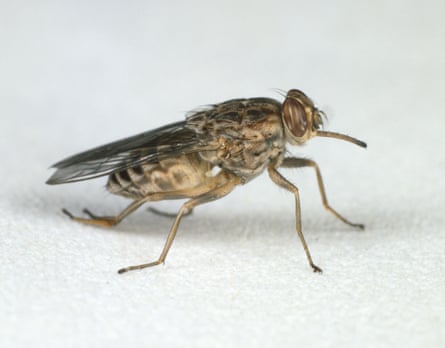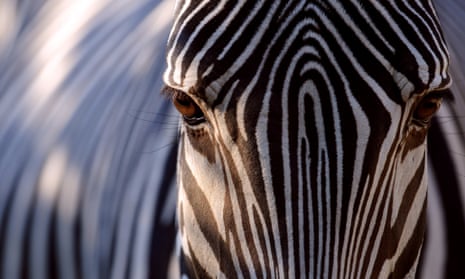The zebra’s striped coat is simultaneously extraordinary and stunning. So wondrous, in fact, that many people have imagined it to be evidence of God’s infinitely artistic hand. Over the years, there have been many more rational explanations, but that all-important scientific consensus has remained elusive.
Charles Darwin certainly found the zebra’s stripes to be a conundrum. In The Descent of Man, he dismissed the idea they could act as camouflage, citing William Burchell’s observations of a herd:
Their sleek ribs glistened in the sun, and the brightness and regularity of their striped coats presented a picture of extraordinary beauty, in which probably they are not surpassed by any other quadruped.
Although both males and female zebras are similarly striped, Darwin hedged that “he who attributes the white and dark vertical stripes on the flanks of various antelopes to sexual selection, will probably extend the same view to the … beautiful zebra.” In other words, the stripes help males and females make sensible choices about whom they mate with.
Alfred Russel Wallace begged to differ. “It is in the evening, or on moonlight nights, when they go to drink, that they are chiefly exposed to attack,” he wrote in Darwinism. “In twilight they are not at all conspicuous, the stripes of white and black so merging together into a grey tint it is difficult to see them at a little distance.”
There are other possibilities too. Perhaps the stripes act as some kind of zoological barcode, allowing one individual to recognise another. It has been suggested they could somehow help with thermoregulation. Or perhaps they are there to deter parasitic flies.
Tim Caro of the University of California, Davis, has puzzled over contrasting colouration in mammals before. Now, in a new study published in Nature Communications this week, he and his colleagues have focused their attention on the zebra.
They take a completely original approach, stepping back from one species of zebra and attempting to account for the differences in patterning across different species and subspecies of zebras, horses and asses. Is there anything about the habitat or ecology of these different equids that hints at the function of stripes?
“I was amazed by our results,” says Caro. “Again and again, there was greater striping on areas of the body in those parts of the world where there was more annoyance from biting flies.” Where there are tsetse flies, for instance, the equids tend to come in stripes. Where there aren't, they don't.
The idea that flies don’t like stripes dates back at least to 1930. Since then, there have been several studies that have provided experimental support, with flies preferring to alight on all-black or all-white surfaces rather than on stripes. The authors also stress the burden of blood sucking insects: both tsetse flies and horseflies are the vectors for significant and often-fatal diseases in horses; they are probably also capable of draining a significant amount of blood (several hundred millilitres in a day, apparently).

The next step will be to come up with experiments that explore the vision of biting insects such as tsetse flies and horseflies and a convincing explanation for why they seem to have such an aversion to stripes. If these are forthcoming, a scientific consensus may yet emerge, saving zoologists of the future from a whole lot of zebra-based head-scratching.
Caro T et al (2014) The function of zebra stripes. Nature Communications. Published 1 April 2014. doi:10.1038/ncomms4535

Comments (…)
Sign in or create your Guardian account to join the discussion